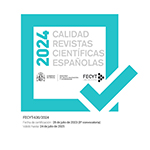What Heraclitus and Parmenides have in common on Reality and Deception
Abstract
It is usually assumed that Heraclitus is, exclusively, the philosopher of flux, diversity and opposition while Parmenides puts the case for unity and changelessness. However, there is a significant common understanding of things (though in differing contexts), not simply an accidental similarity of understanding. Both philosophers, critically, distinguish two realms: on the one hand, there is the one, common realm, identical for all, which is grasped by the ‘logos that is common’(Heraclitus) or the steady nous (Parmenides) that follows a right method in order to interpret the real. On the other hand, the realm of multiplicity seen and heard by the senses, when interpreted by ‘barbarian souls’, is not understood in its common unity. Analogously, when grasped by the wandering weak nous it does not comprehend the real’s basic unity. In this paper I attempt to defend the thesis that both thinkers claim that the common logos (to put it in Heraclitean terms) or the steady intellect (to say it with Parmenides) grasp and affirm the unity of the real.Downloads
Article download
License
In order to support the global exchange of knowledge, the journal Logos. Anales del Seminario de Metafísica is allowing unrestricted access to its content as from its publication in this electronic edition, and as such it is an open-access journal. The originals published in this journal are the property of the Complutense University of Madrid and any reproduction thereof in full or in part must cite the source. All content is distributed under a Creative Commons Attribution 4.0 use and distribution licence (CC BY 4.0). This circumstance must be expressly stated in these terms where necessary. You can view the summary and the complete legal text of the licence.











